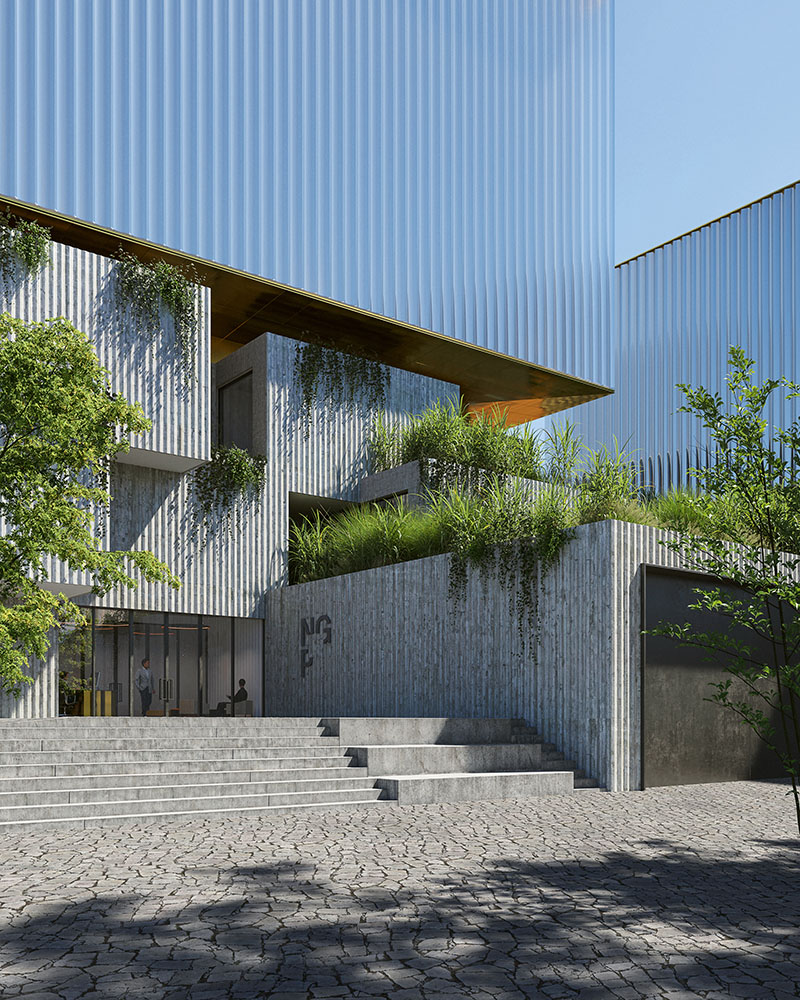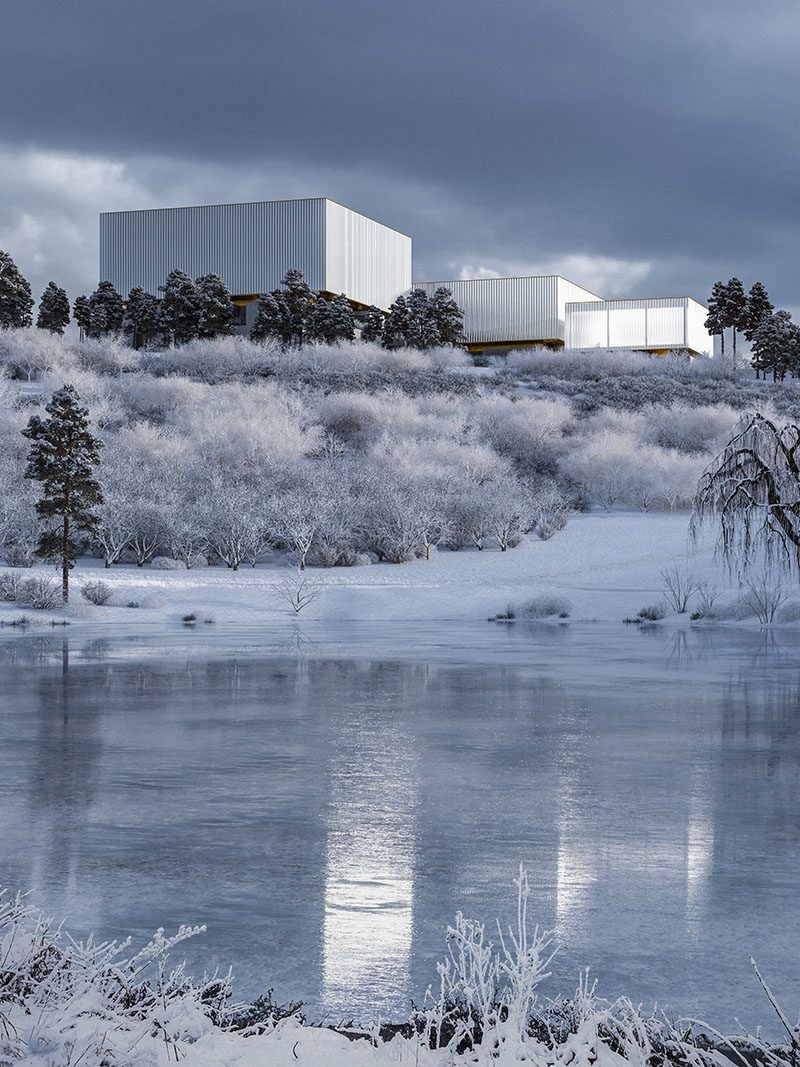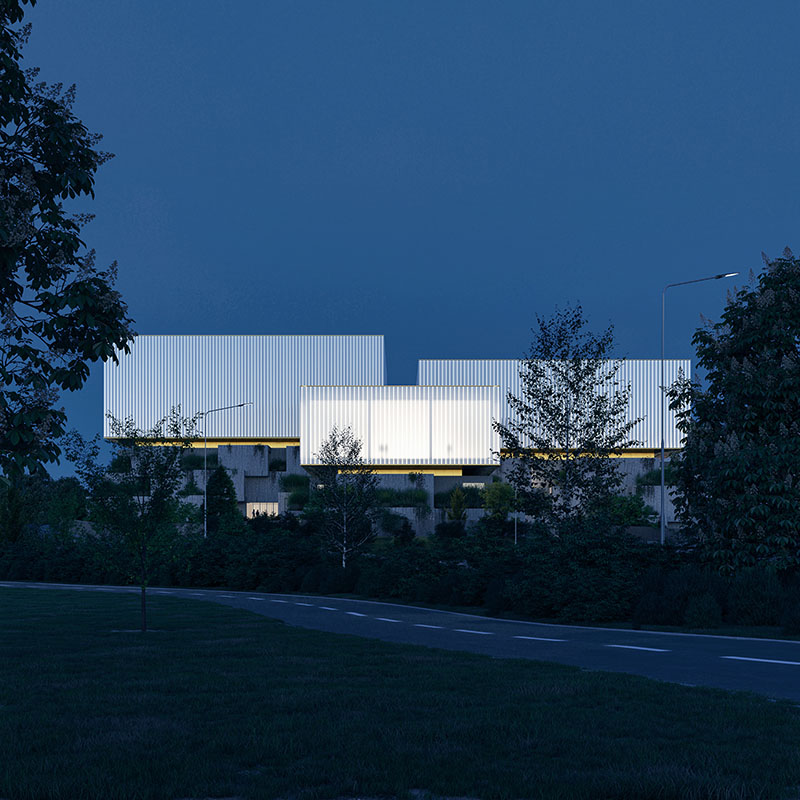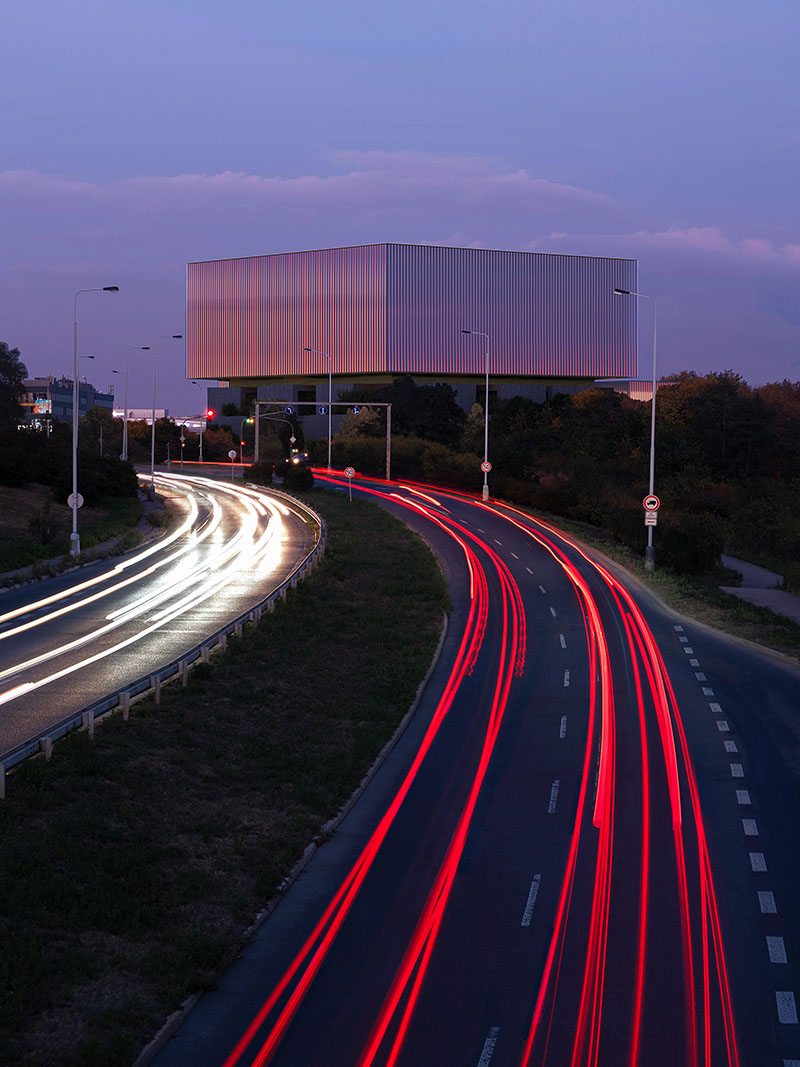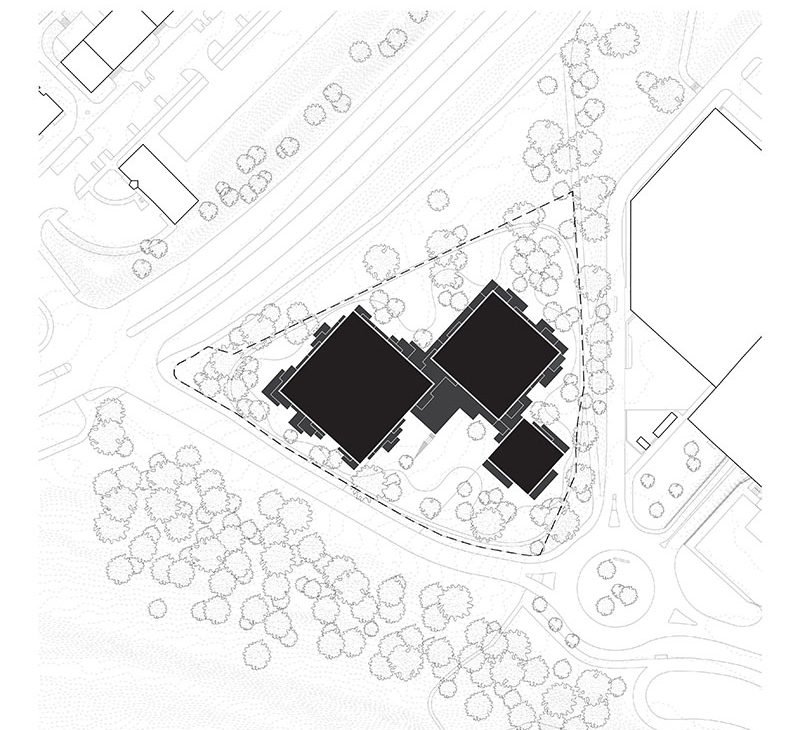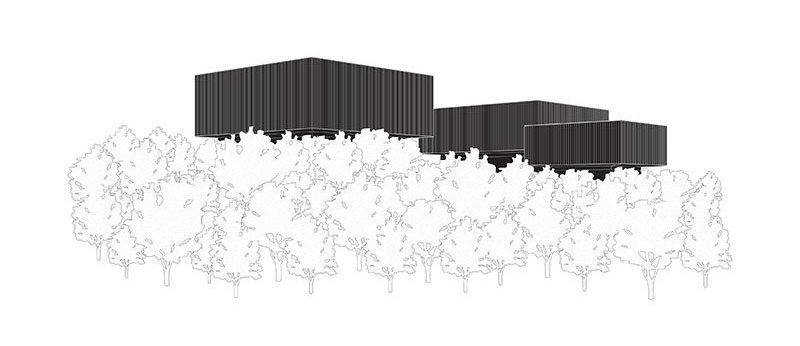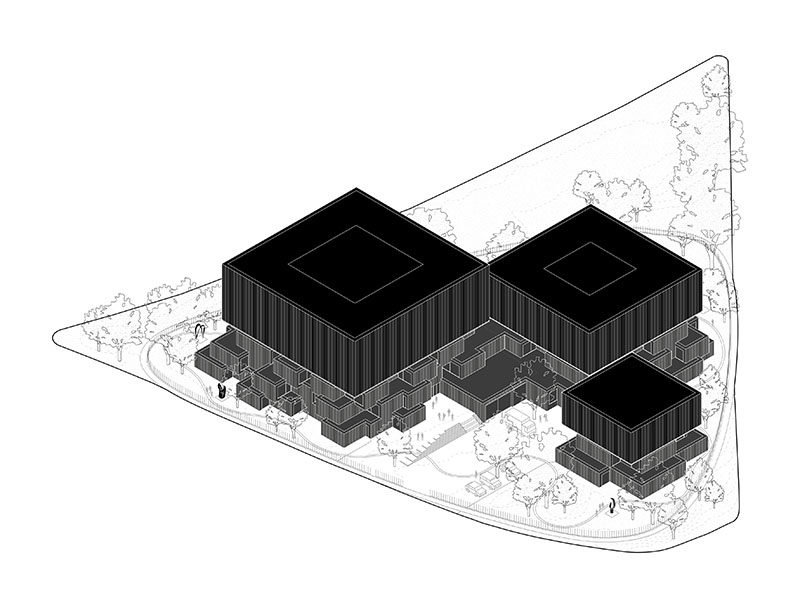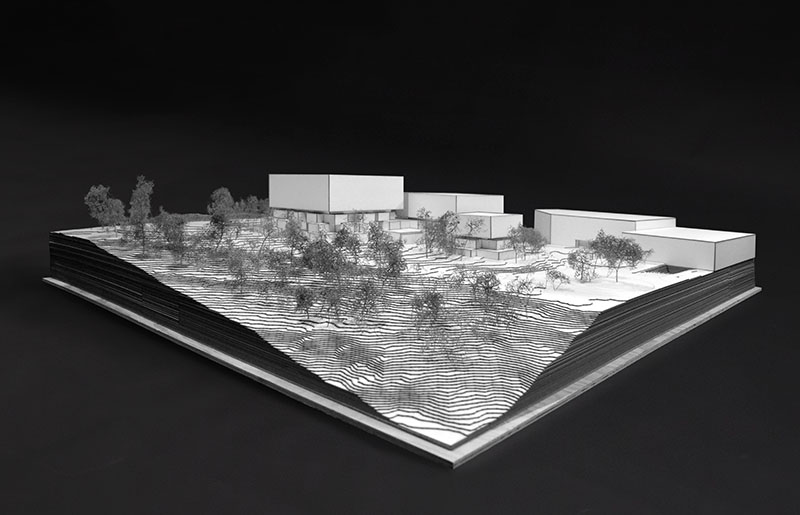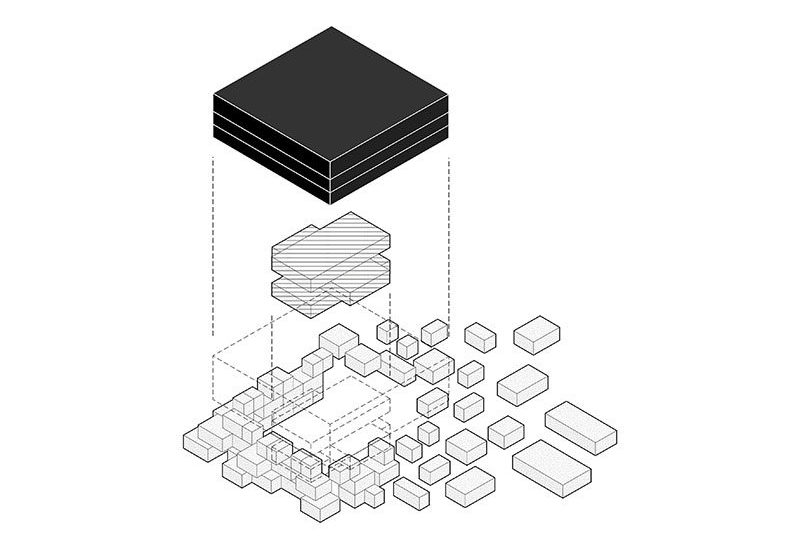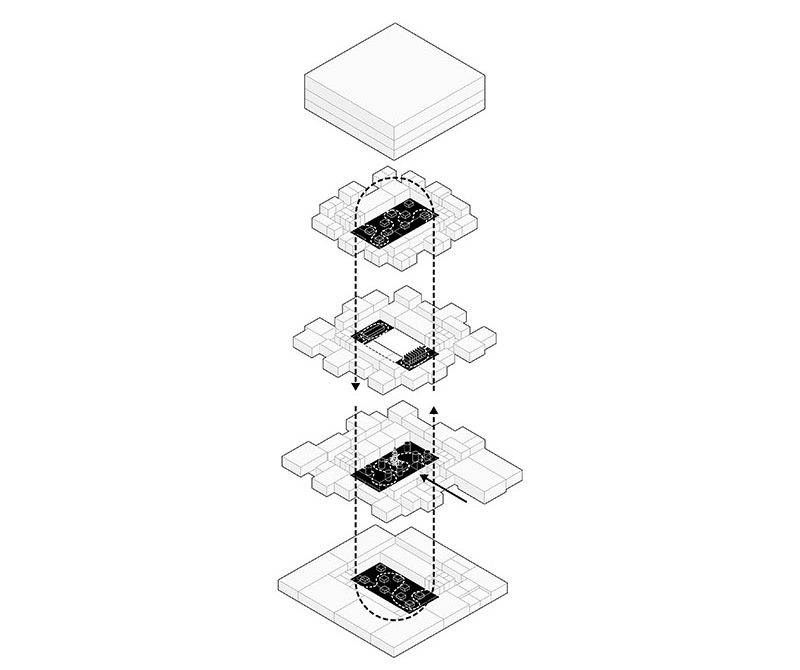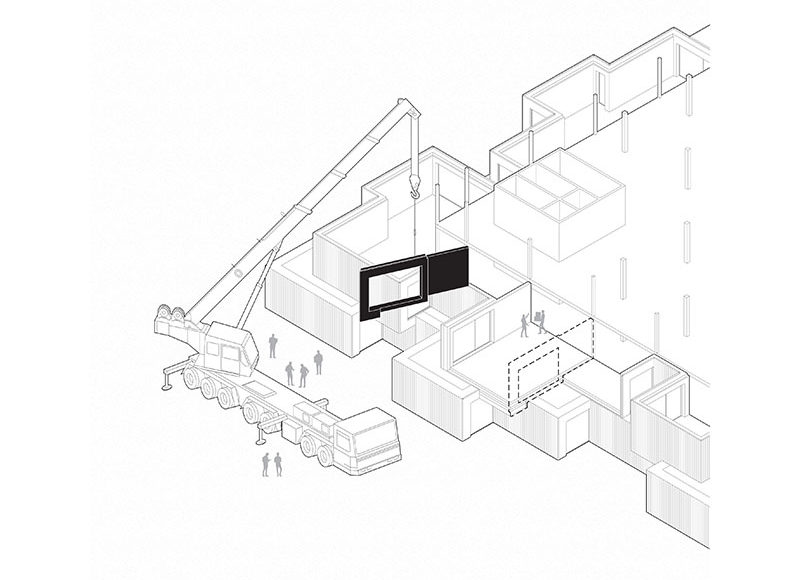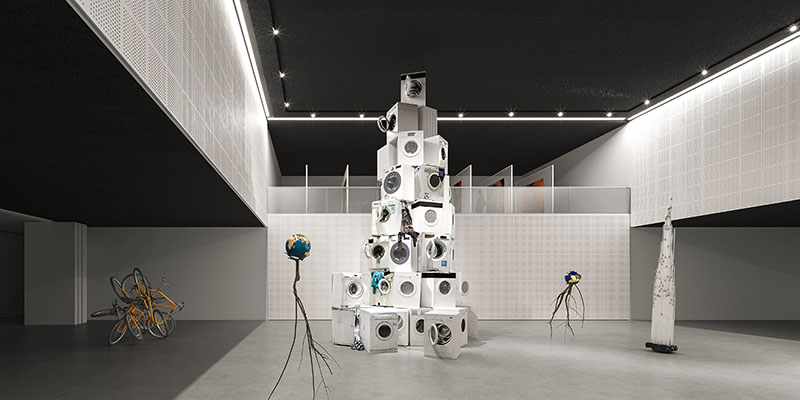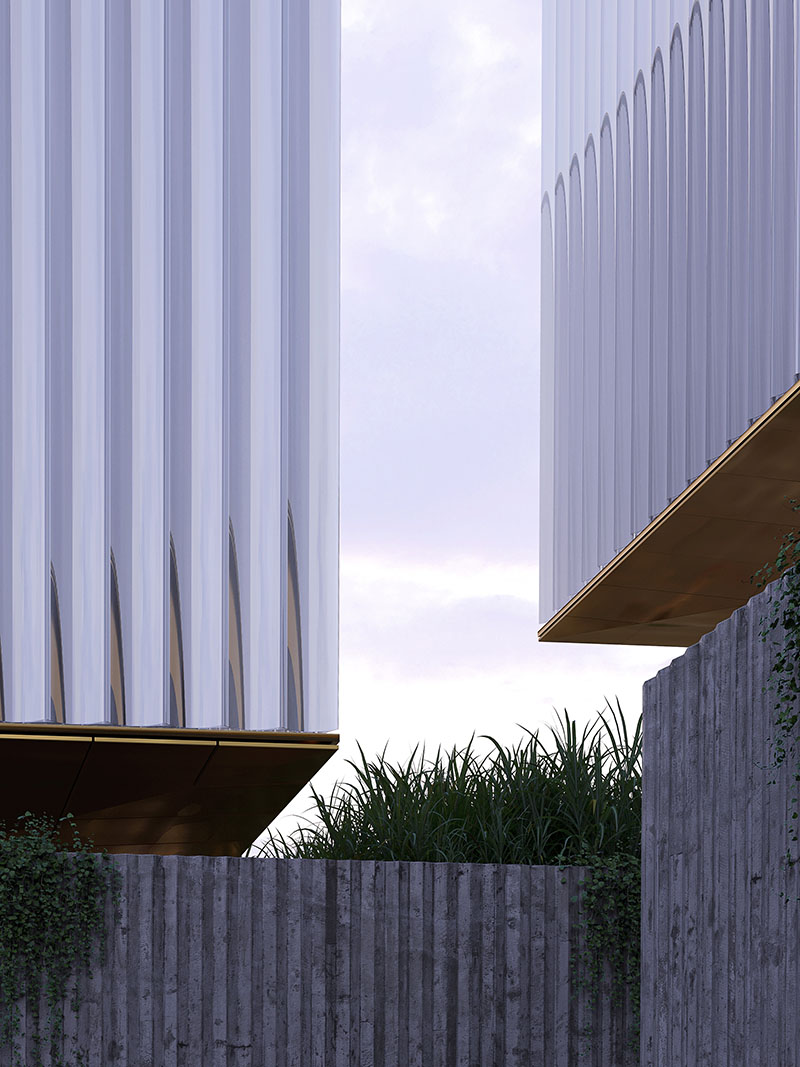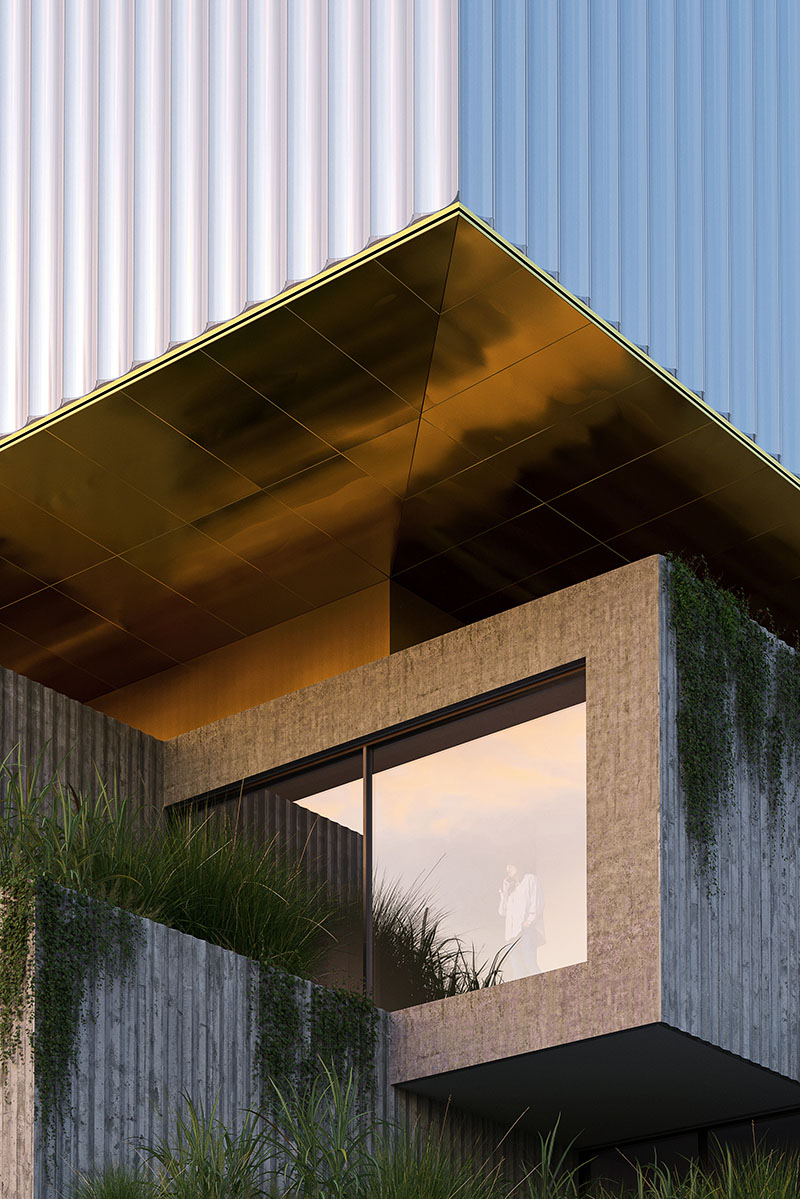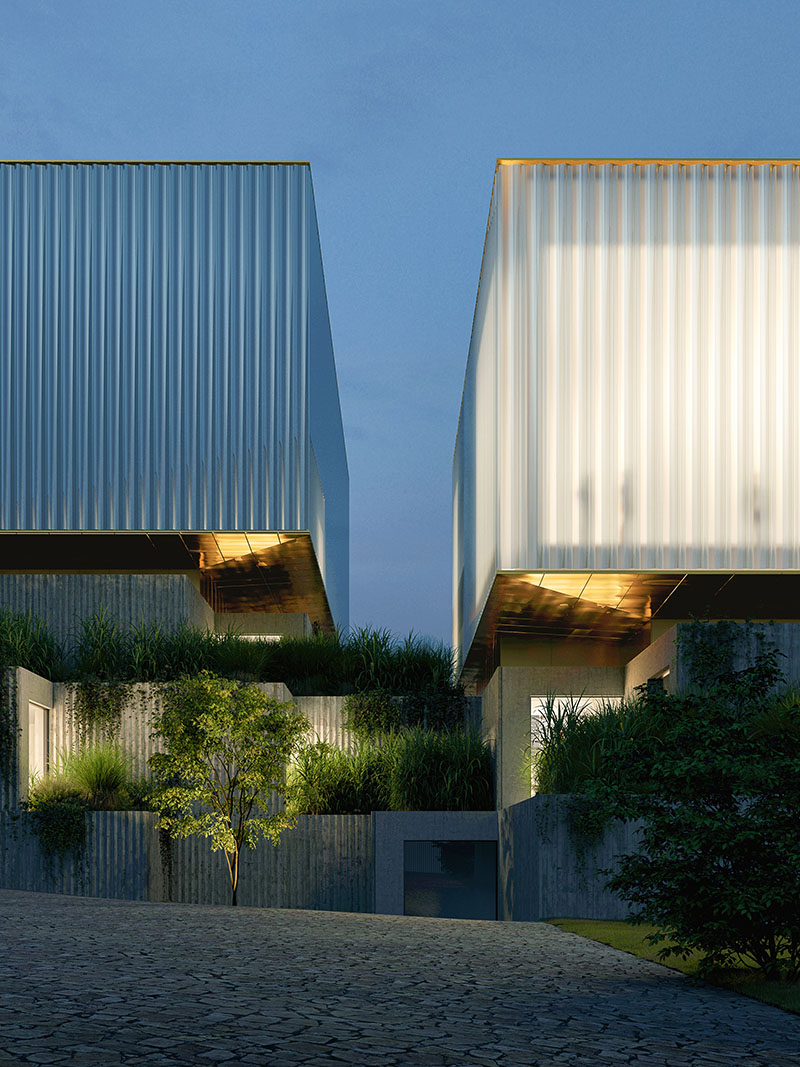The new depository for National Gallery Prague will be built in the outskirts of the city, right on the edge between nature and the city. It will contain most of the gallery valuable collections, large part of which will be publicly accessible through the open show depot.
The building itself is located on the edge of the slope, overlooking the whole beautiful valley with its abandoned orchards and rock formations.
From the city side, the building is neighbouring the block of flats from soviet era and a large shopping mall. The proposal is set to be a positive catalyst, clean and head turning statue in the place heavily contaminated by buildings of low value and graphic advertisement of all sorts. The nearby shopping mall is set to be closed in near future and will be probably converted into mixed-use and residential district. The new depository areal will create clear gesture that defines the identity for the whole upcoming district.
The close surroundings of the building will be used as an outdoor accessible lapidary, the public park. This will help cultivating the place, which is now on the fringes of society’s interest.
The depository itself is designed as three almost separate volumes. The reason behind this is the request to stage the construction. The first stage should be rather quick, so the collections now placed in famous functionalism Fair Trade Palace can be moved here and the Fair Trade Palace is then set to be refurbished.
The shape and look of the building are strictly based on the program and its unusual requests. There are three distinct parts, the building needed to house. The depository itself, the open accessible depository and the laboratories, ateliers, offices, etc.
The depository, which is a special kind of storage is designed as a safe vault elevated over the rest of the building. It is accessible only via heavily guarded elevators. From the outside, it is the most visible part of the building, the large cube shaped volumes. The lower part of the building combines the accessible depository in the middle of the building’s layout surrounded by the small rooms with laboratories, workshops and offices. These rooms have much lower scale compared to the rest of the building and create the mountain-like shape, that crumbles and carefully opens to the outside.
The open depository is designed as a closed loop, in which the visitors will have the opportunity to see the art pieces never seen before and to them in a way usually not possible. There is the double height space in the centre of the building, which can be used as laboratory and testing ground for curators – with its fully movable walls and ceiling, equipped with the variety of the lights and the potential to simulate wide range of scenarios, it will be used to see the art pieces as desired before the moving to the exhibition itself.
The outdoor appearance of the building balances on the thin line of contrasts. Between the need to preserve and guard the valuable collections and to open the grounds for public use.
The materials and the shape of the building also twist and turn the way the building operates.
The largest volumes, the protective and heavy vault is designed with light metallic façade that reflects the surroundings, while the formally open lower part of the building is made of prefab concrete blocks, that while rough on the edges, allow the building to connect with the lush greenery that surrounds it.
The construction is set to be completed in late 2026.

